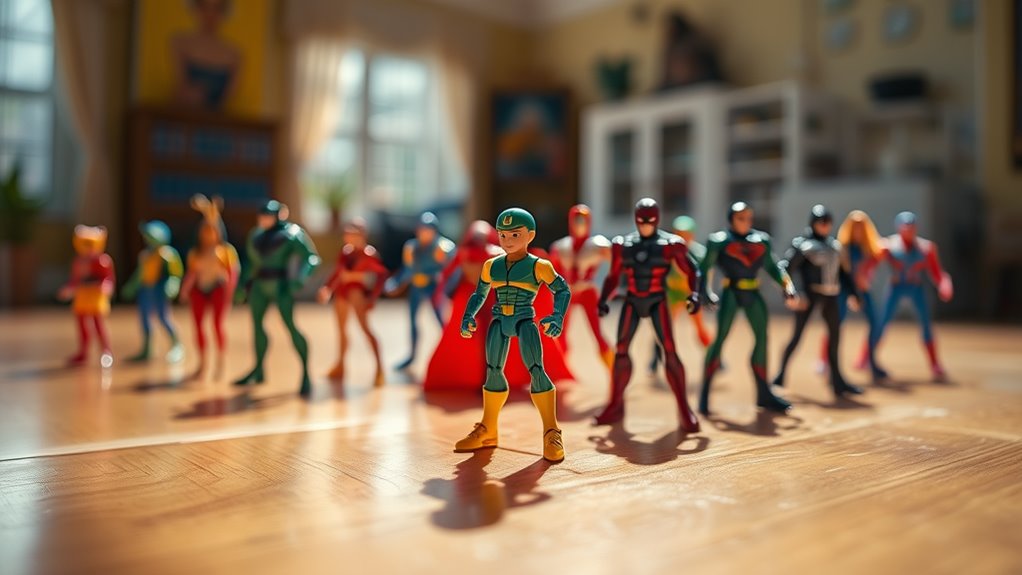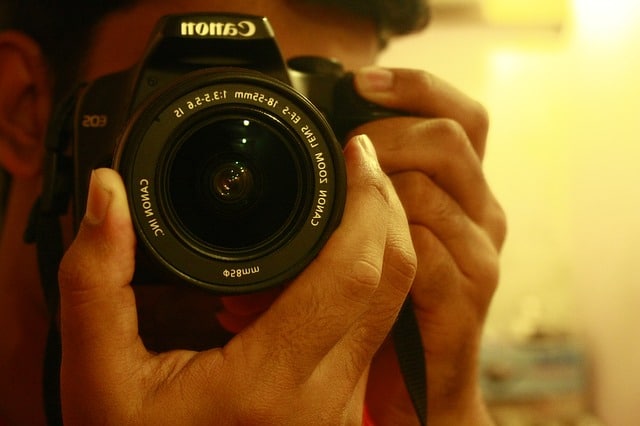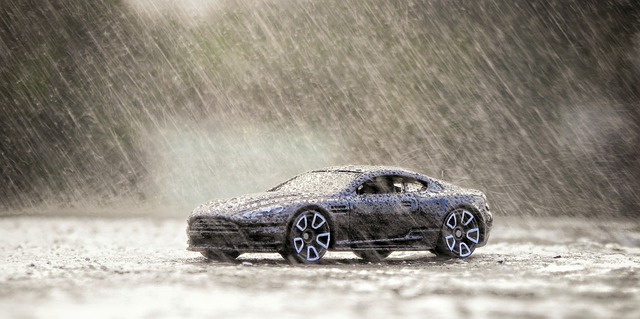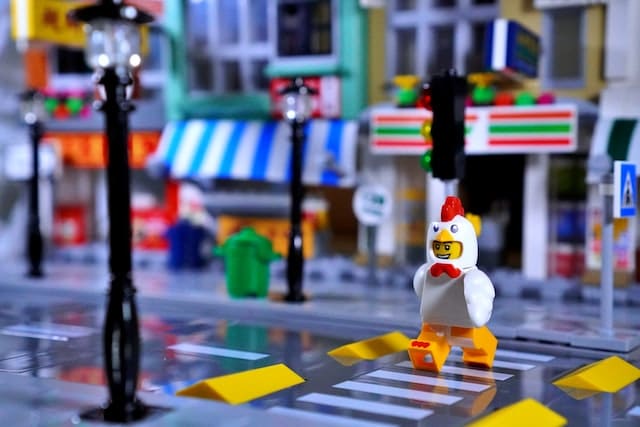For toy photography, aim for dynamic compositions by using wide-angle lenses (10mm-24mm) for expansive shots and macro lenses (50mm-100mm) to capture intricate details. Standard lenses provide versatility, while telephoto lenses (70mm-200mm) focus on isolating subjects. Your choice should align with your creative vision and shooting environment. Explore these options to elevate your toy photography artistry further.
Understanding Focal Lengths in Photography
In the domain of photography, understanding focal lengths is essential for capturing compelling images. You need to grasp how different focal lengths affect your photos to enhance your toy photography. A focal length determines the angle of view and magnification of your lenses. Shorter focal lengths provide a wider field of view, while longer ones offer greater zoom and detail from a distance. Knowing this helps you decide how to frame your toys, emphasizing their tiny details or setting them within a larger context. A lens with a focal length of about 50mm closely mimics the human eye's perspective, making it a versatile choice for toy photography. By mastering focal lengths, you'll wield the power to create more dynamic and engaging compositions.
Wide-Angle Lenses for Expansive Shots
When you want to capture more of the scene in your toy photography, wide-angle lenses are your best friend. They allow you to include expansive backgrounds, creating a sense of scale and context for your toys. By using a focal length between 10mm and 24mm, you can emphasize the environment while keeping your subjects in focus. This approach is perfect for storytelling, as it immerses viewers in the miniature world you're portraying.
Wide-angle lenses also exaggerate perspective, making objects in the foreground appear larger than those in the background. This effect can add drama and depth to your shots. However, be mindful of distortion, especially at the edges, and consider your composition carefully to maintain balance and harmony in your images.
Standard Lenses for Versatility

When you use standard lenses for toy photography, you achieve a balanced perspective that brings your subjects to life without distortion. Their flexibility makes them perfect for everyday shooting, allowing you to capture scenes with a natural look. Whether you're photographing a single figure or a small group, standard lenses offer the versatility you need to get creative.
Balanced Perspective Achievements
Although it might seem tempting to plunge into specialized lenses for toy photography, standard lenses offer a balanced perspective that's often underestimated. By using a standard lens, you can achieve a natural look that doesn't distort your toys. These lenses, typically around 50mm on a full-frame camera, closely mimic the human eye's perspective, providing an authentic view of your subjects.
With standard lenses, you can capture the intricate details of your toys without the exaggerated effects of wide-angle or telephoto lenses. This balanced perspective allows you to maintain a sense of realism, making your photos more engaging. You'll find that these lenses are perfect for creating depth and dimension, capturing every nuance while keeping your shots grounded and relatable. Embrace the versatility and watch your toy photography shine.
Everyday Shooting Flexibility
While specialized lenses have their place, standard lenses offer unparalleled everyday shooting flexibility for toy photography. You can capture a wide range of scenes without constantly swapping lenses. A 50mm lens, often referred to as the "nifty fifty," provides a natural perspective that's perfect for showcasing toys in their environment. It balances background blur and depth of field, highlighting your subject while retaining context.
Standard lenses are versatile, handling close-ups and wider shots with ease. They're great for spontaneous shoots where you might need to quickly adapt to different scenes or lighting conditions. You'll appreciate the simplicity they bring to your gear setup, enabling you to focus more on creativity and less on technical adjustments. With the right standard lens, your toy photography becomes both effortless and dynamic.
Telephoto Lenses for Close-Up Details
Capturing the intricate details of toys requires the precision of telephoto lenses. You'll find that these lenses, with focal lengths typically ranging from 70mm to 200mm, allow you to isolate specific features without needing to move in too close physically. This distance not only keeps your setup intact but also helps in controlling the depth of field, making your toy's details pop against a beautifully blurred background.
When you're shooting toys in outdoor settings or incorporating multiple elements, telephoto lenses can compress the scene, giving a more dramatic effect. They're perfect for highlighting textures, expressions, or intricate patterns that might go unnoticed otherwise. So, grab your telephoto lens and explore the finer details of your miniature subjects, capturing them in stunning clarity and detail.
Macro Lenses for Extreme Close-Ups
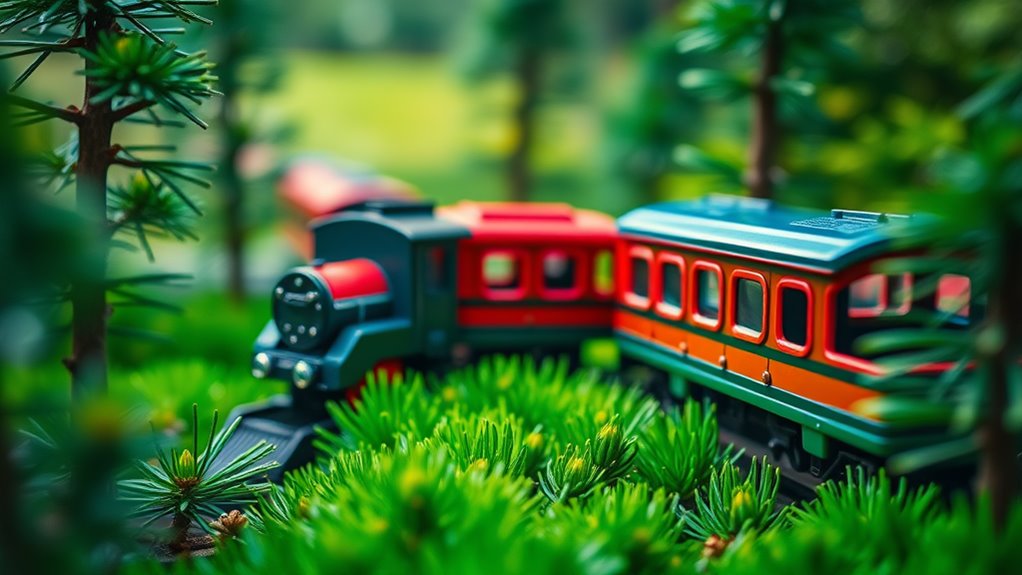
When you're aiming to capture the intricate details of your toy collection, macro lenses are your best friend. They allow you to highlight the textures and subtleties that bring out the miniature realism in your shots. With a good macro lens, you can transform even the smallest figurines into enchanting subjects.
Capturing Fine Toy Details
Bringing out the intricate details of your favorite toys requires a specialized approach, and that's where macro lenses shine. With their ability to focus closely, these lenses let you capture the tiny textures and features that make each toy unique. You'll find that macro lenses, usually with focal lengths between 50mm and 100mm, provide the best results for extreme close-ups. They allow you to fill the frame with your subject, highlighting even the smallest elements, like a toy soldier's facial expression or the fine stitching on a plush toy.
When using a macro lens, pay attention to lighting, as it can dramatically affect the visibility of details. Soft, diffused light often works best, reducing harsh shadows and showcasing your toy's true essence.
Enhancing Miniature Realism
While shooting toys with a macro lens, you can transform simple scenes into lifelike miniature worlds. Macro lenses let you capture extreme close-ups, revealing details often missed by the naked eye. You get to explore textures, expressions, and intricate features that enhance the realism of your toy photography. With a macro lens, you're not just taking photos; you're crafting stories and scenes that feel tangible and immersive.
To achieve the best results, focus on lighting and depth of field. Good lighting highlights details, while a shallow depth of field brings your subject into sharp focus against a beautifully blurred background. Experiment with angles and perspectives to maximize the realistic effect. Remember, practice makes perfect, so keep experimenting and refining your technique.
Prime vs. Zoom Lenses for Toy Photography
Though choosing the right lens can be challenging, understanding the difference between prime and zoom lenses is essential for elevating your toy photography. Prime lenses have a fixed focal length, offering superior image quality and sharper details. They're usually faster with wider apertures, allowing you to capture stunning photos even in low light. This can be great if you love creating beautiful bokeh effects to make your toys stand out.
On the other hand, zoom lenses offer flexibility. You can quickly adjust the focal length, letting you try different compositions without changing lenses. This versatility is particularly useful when you need various perspectives or are shooting outdoors. While zooms might not match the sharpness of primes, they provide convenience and adaptability in a single package.
Choosing the Right Lens for Your Style
When selecting a lens that complements your style in toy photography, it's important to evaluate how you like to shoot. Do you prefer capturing wide scenes or focusing on intricate details? If you're drawn to expansive backgrounds, a wide-angle lens might be your match. For those who love highlighting tiny, intricate features of toys, a macro lens could be ideal.
Consider your environment too. If you're often shooting in tight spaces, a lens with a broader field of view helps you capture more in a limited area. On the other hand, if you enjoy isolating your subject with a blurred background, a lens with a longer focal length will serve you well.
Ultimately, align your lens choice with your creative vision.
Frequently Asked Questions
How Can Lighting Affect the Focal Length Choice in Toy Photography?
Lighting impacts your focal length choice by influencing depth of field and detail visibility. If you've got bright lighting, you can use longer focal lengths, enhancing detail. In low light, wider lenses capture more of the scene effectively.
What Are Some Creative Techniques to Enhance Toy Photography With Different Lenses?
You can use wide-angle lenses for dramatic perspectives or macro lenses for intricate details. Try tilt-shift lenses for selective focus effects. Experiment with depth of field and bokeh to enhance your toy photography's visual impact and storytelling.
Are There Budget-Friendly Lens Options Suitable for Toy Photography?
You're wondering about budget-friendly lens options for toy photography, right? Well, imagine capturing every tiny detail with stunning clarity. Affordable prime lenses or macro attachments could be your secret weapon. Discover the magic without breaking the bank!
How Do Lens Filters Impact Toy Photography Results?
Lens filters can transform your toy photography by enhancing colors or reducing glare. You'll notice improved image quality and depth. Experiment with different types, like polarizers or neutral density filters, to achieve the desired effects and mood.
Can Smartphone Lenses Be Effective for Professional Toy Photography?
Smartphone lenses can certainly shine in toy photography. Their compact convenience captures creative close-ups. You'll need to focus on lighting and composition, but with practice, they're effective for engaging and professional-looking shots.
At a Glance
You've just revealed the secret powers of toy photography lenses! Now, you can magically transform any toy scene into a breathtaking masterpiece. Whether you're capturing the sweeping vistas of a toy city with a wide-angle lens or diving into the microscopic universe of a toy ant with a macro lens, your photos will dazzle like never before. So go ahead, wield these lenses like a wizard with a wand, and watch your toy photography reach legendary heights!

